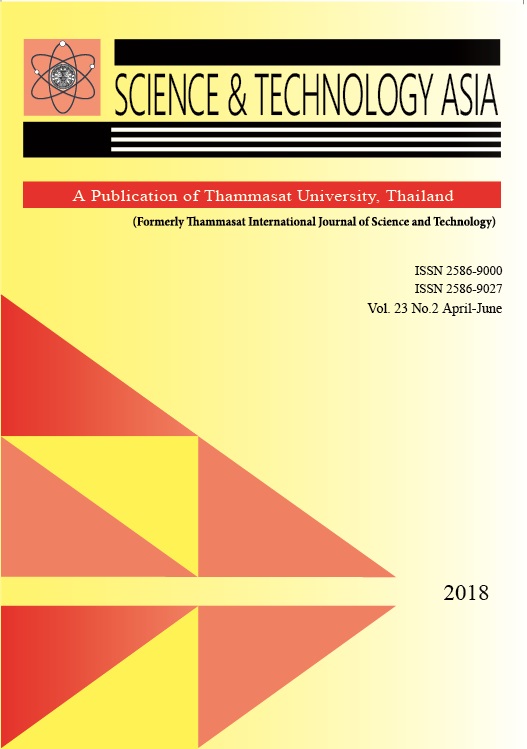Acceptor Specificity of Recombinant Cyclodextrin Glycosyltransferase from Bacillus circulans A11
Main Article Content
Abstract
Cyclodextrin glycosyltransferase (CGTase) catalyzes an intermolecular transglycosylation reaction to produce functional oligosaccharides or glycosides, which can be used in several industries. In this study, the p19bBC recombinant cells containing CGTase gene from Bacillus circulans A11 were used for synthesizing CGTase. The maximum expression was obtained when the p19bBC cells were cultured at 37oC for 24 h with 0.2 mM IPTG. The recombinant CGTase was purified up to 6-fold by 5% (w/v) starch adsorption and the specific activity of enzyme was 1.08x104 units/mg with a 71% yield. The 72-kDa relative molecular mass of purified enzyme was determined by 10% SDS-PAGE. In addition, the acceptor specificity of enzyme was investigated from transglycosylation reaction using β-cyclodextrin as glycosyl donor and various saccharides and flavonoids as acceptors. Among the group of saccharide acceptors, glucose gave the highest activity, followed by maltose and mannose. Within the flavonoid group, hesperidin gave the highest activity with 13.5% as compared to glucose. Due to the broad range of bioactivities of hesperidin flavonoid, and also, the possibility of new glycoside products, this study suggested that using hesperidin as an acceptor is far superior to the saccharides in terms of further applications.


